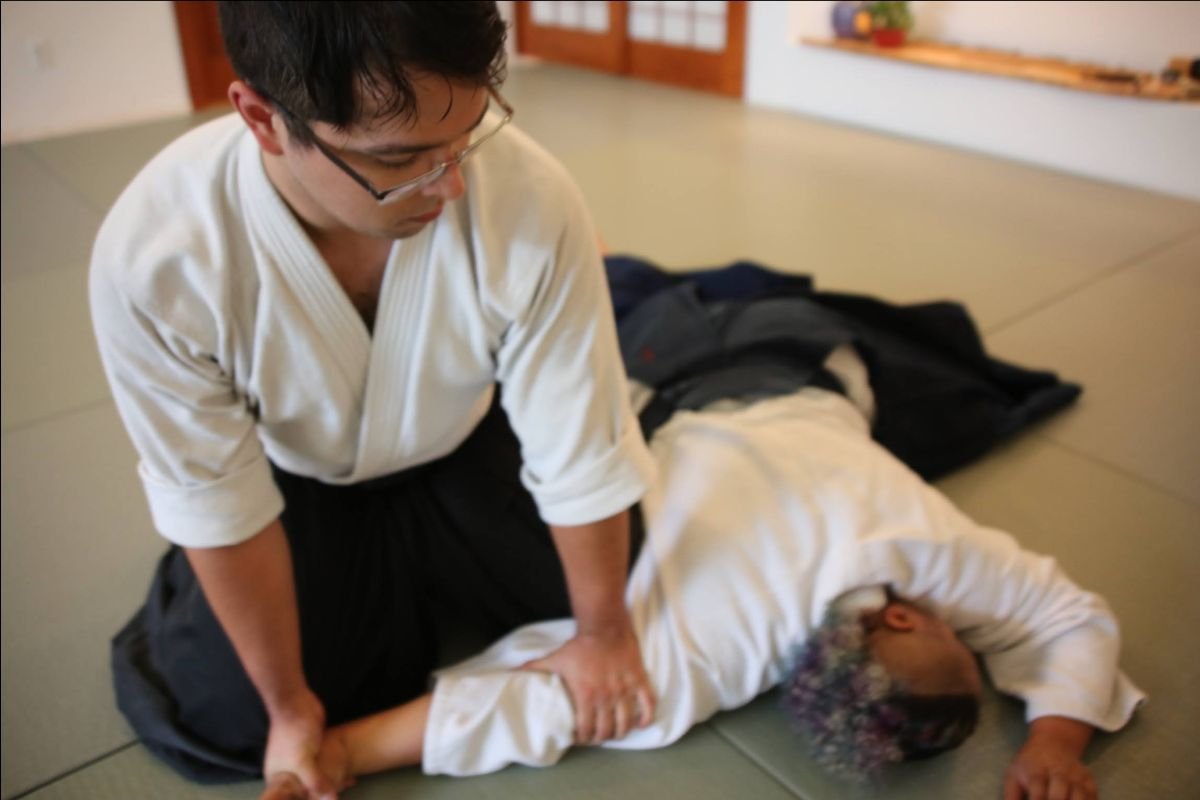Past newsletters
newest first
Changing Directions - César San Miguel
“I invite you to think of Aikido as an inquiry into how we move through the world. The techniques and the contact we share with our partners are the vehicles by which we study how to move with dignity, strength, and compassion.
While many of us are familiar with the concepts of inclusivity, diversity, equity, and accessibility, we may not know how they may be applied within the context of the Aikido world at large and our own individual dojo communities. In this moment we must recall our first steps on the tatami, and approach this subject with a beginner's mind… Back to basics.
Ukemi and Pedagogy - Sam Taitel
“‘How do you ~do~ that?’ is a frequent question usually referring to ukemi when directed to me. The quiet falls, smooth rolls, breakfalls, high falls, quick get ups, strong attacks - there are so many tangible skills, but the sum of all those together still don’t quite capture great ukemi. An uke can learn, practice, and do all those things, but where’s the je ne sais quoi?”
The Hidden Cost of Emotional Labor- César San Miguel
“Losing two days’ work meant I lost upwards of a thousand dollars and the chance to establish relationships with new clients, not to mention being in severe physical pain and experiencing emotional whiplash. It is not the job of people of color to do the emotional labor required to educate white people about racism. So often do white people behave as if entitled to our emotional energy and knowledge painfully obtained by experiencing discrimination. Racism is everyone’s problem, and it’s up to white people to deconstruct the entrenched white supremacy.”
Claiming Self-Agency on the Mat When There Is No Culture of Consent - Arielle Herman
“Consent is integrally tied to various elements of our identities. As women, we are taught not to hurt anyone’s feelings by indicating they may be a shitty training partner; as Black or Queer or other persons marginalized in the larger culture, we are expected to uphold the myth that in aikido we are all equally valued; as martial artists, we are conditioned to suck it up if we are hurt or scared and yet as aikidoka we are to uphold the chimera of aikido as a practice of love and harmony. There are strict rules about the hierarchical structure of aikido, with emphasis on using honorifics such as sensei and sempai and infinite layers of proper etiquette regarding what you can say to whom and when . . . .”
Mistakes and Apologies - César San Miguel
“This isn’t about manufacturing guilt for conditions of our birth and the privileges those conditions afford us. It’s about recognizing them and realizing our responsibility to do the work on ourselves to ensure that we move in the world in such a way that perpetuates healing, not harm.
Isn’t that what Aikido is all about? “
Thank You, Think, Challenge - Sam Taitel
“In my joy, it took me a moment to recognize the color of the band-aid I had just plucked out of the box. It was brown. A beautiful, dark chocolatey, rich soil brown. And that was not my only choice! Looking into the box again I saw a whole spectrum of colors. I admit, I teared up a bit. Getting to choose a band-aid that matched my skin tone made me feel recognized and valued as a member of the community. A small choice and a big impact…”





